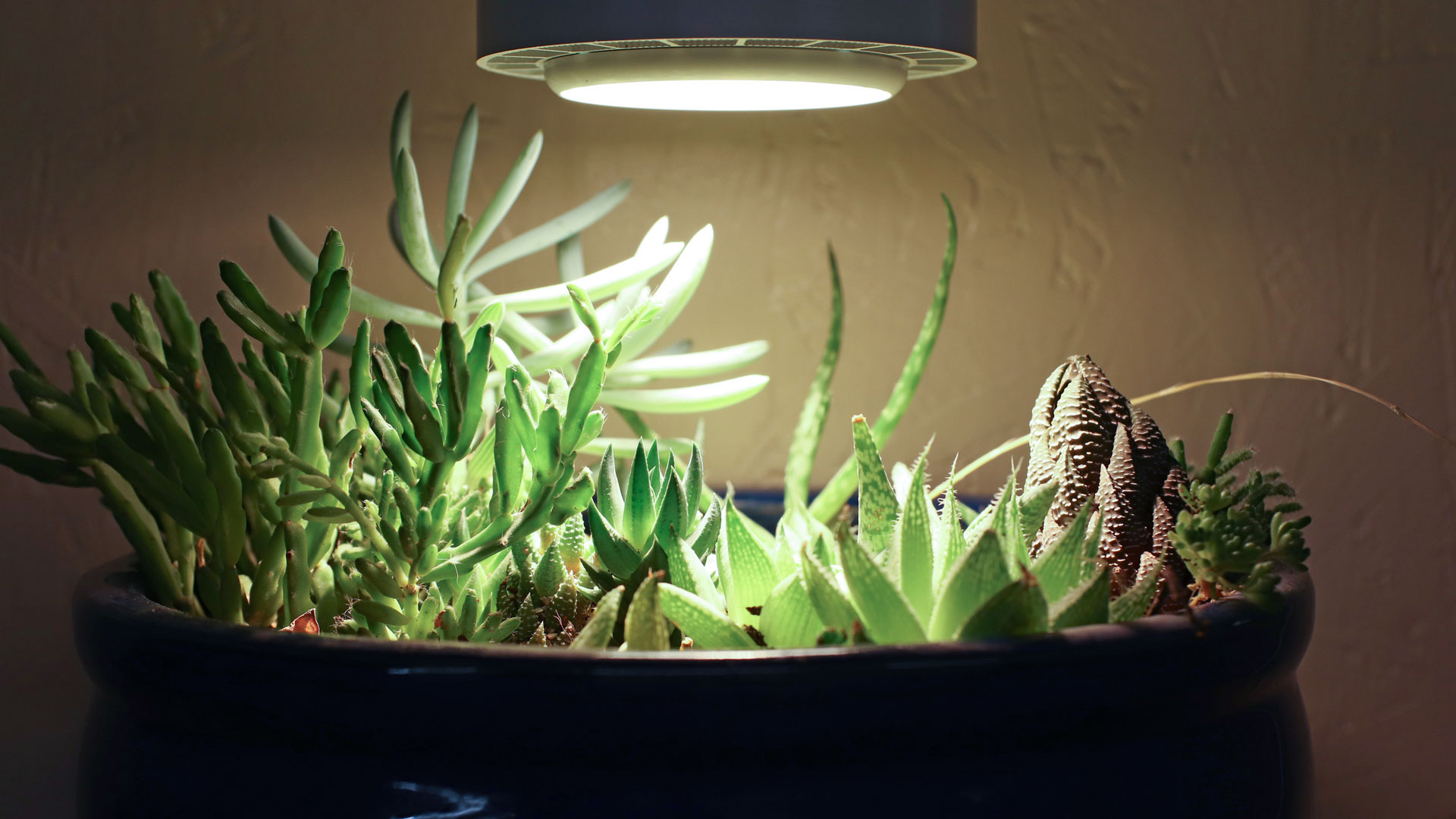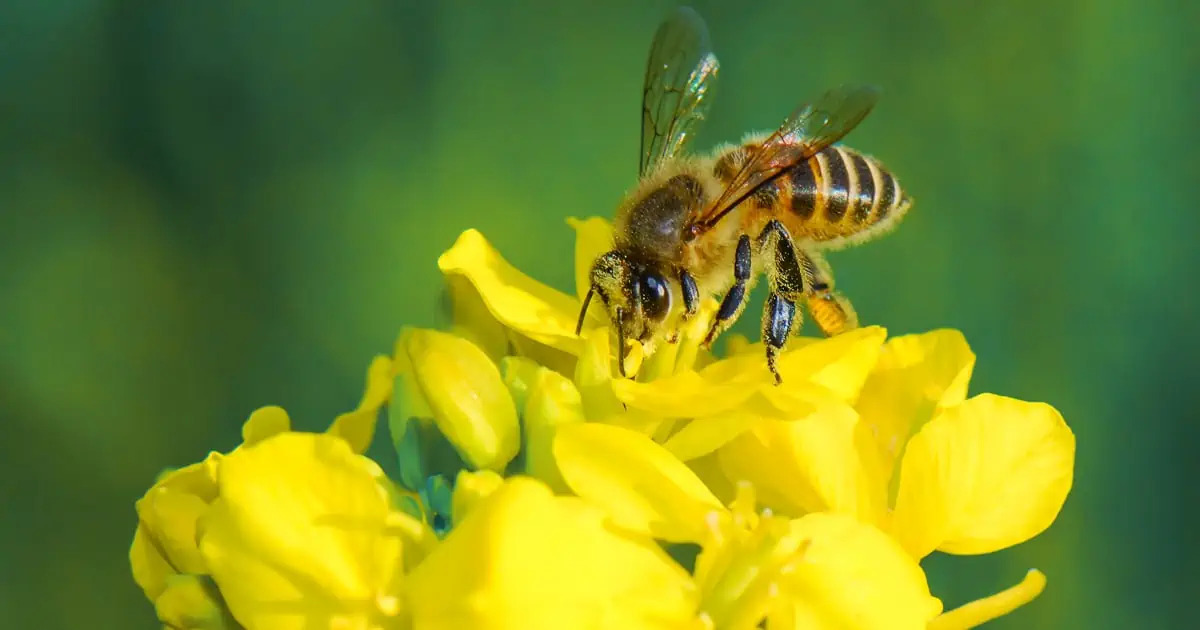Home>Gardening Tips and Tricks>Eco-Friendly Gardening>How Much Faster Do Plants Grow In Aeroponics


Eco-Friendly Gardening
How Much Faster Do Plants Grow In Aeroponics
Modified: January 22, 2024
Discover the eco-friendly advantages of aeroponic gardening and learn how plants thrive and grow faster in this sustainable method. Explore the benefits of aeroponics for eco-conscious gardening enthusiasts.
(Many of the links in this article redirect to a specific reviewed product. Your purchase of these products through affiliate links helps to generate commission for Chicagolandgardening.com, at no extra cost. Learn more)
Table of Contents
Introduction
Welcome to the fascinating world of aeroponics, where the art of growing plants reaches new heights. In this article, we will delve into the remarkable realm of aeroponics and explore the myriad benefits it offers for eco-friendly gardening enthusiasts.
Aeroponics represents a cutting-edge approach to cultivating plants that has garnered attention for its efficiency, sustainability, and ability to optimize plant growth. By suspending plant roots in a nutrient-rich mist environment, aeroponics nurtures greenery with unparalleled precision, fostering robust and rapid growth.
As we embark on this journey, we will uncover the inner workings of aeroponics, shedding light on the factors that influence plant growth in this innovative system. Furthermore, we will compare the growth of plants in aeroponics with traditional soil-based methods, unveiling the advantages that aeroponics brings to the table.
Prepare to be captivated by the myriad benefits of aeroponics, from water conservation and space efficiency to the potential for year-round cultivation. By the end of this exploration, you will gain a deep understanding of why aeroponics stands as a beacon of sustainability and productivity in the realm of eco-friendly gardening.
Let's dive into the world of aeroponics, where plants thrive in a misty embrace, and the future of sustainable gardening unfolds before our eyes.
Understanding Aeroponics
Aeroponics is a revolutionary method of growing plants that defies traditional agricultural practices. In this system, plants are cultivated without the use of soil, instead relying on a nutrient-rich mist to nourish their suspended roots. This mist is delivered at regular intervals, ensuring that the plants receive an optimal balance of water, nutrients, and oxygen.
The key to aeroponics lies in the efficient delivery of nutrients directly to the roots, promoting rapid growth and robust development. By harnessing this innovative approach, aeroponic systems maximize resource efficiency while minimizing waste, making them a sustainable choice for modern gardening.
One of the defining features of aeroponics is its ability to accommodate a wide range of plant species, from leafy greens and herbs to fruit-bearing plants. This versatility makes aeroponics an attractive option for urban gardening, allowing enthusiasts to cultivate a diverse array of crops in limited spaces.
Furthermore, aeroponic systems offer precise control over environmental factors such as temperature, humidity, and light, enabling growers to create an optimal setting for plant growth. This level of control contributes to the remarkable efficiency of aeroponics, as it minimizes the risk of pests and diseases while maximizing the potential for bountiful harvests.
As we unravel the intricacies of aeroponics, it becomes evident that this method represents a harmonious fusion of science and nature. By harnessing the power of mist to nurture plants, aeroponics exemplifies the potential for sustainable and resource-efficient gardening practices.
Now that we have gained a foundational understanding of aeroponics, let’s delve deeper into the factors that influence plant growth in this innovative system.
Factors Affecting Plant Growth in Aeroponics
Several key factors play a pivotal role in shaping the growth and development of plants in aeroponic systems. Understanding these influences is essential for optimizing the potential of aeroponics and ensuring the flourishing of greenery in this innovative environment.
1. Nutrient Delivery: In aeroponics, the precise delivery of nutrients to plant roots is paramount. The nutrient solution, typically composed of essential elements such as nitrogen, phosphorus, and potassium, must be finely atomized to form a mist that envelops the roots. This method ensures that plants receive an optimal balance of nutrients, promoting vigorous growth and abundant yields.
2. Oxygenation: Adequate oxygenation of the root zone is crucial for facilitating nutrient uptake and promoting healthy growth. In aeroponic systems, the misting process not only delivers nutrients but also infuses the root environment with oxygen, creating an ideal setting for robust root development and efficient nutrient absorption.
3. Environmental Control: Maintaining optimal environmental conditions, including temperature, humidity, and light levels, is essential for maximizing plant growth in aeroponics. By carefully regulating these factors, growers can create an environment that fosters plant health and accelerates growth, ultimately leading to vibrant and thriving greenery.
4. Root Health: The health and vitality of plant roots are central to their overall growth and productivity in aeroponic systems. Regular monitoring of root health, coupled with appropriate measures to prevent root diseases and ensure proper aeration, is essential for sustaining robust plant growth and maximizing yields.
As we unravel the intricate interplay of these factors, it becomes evident that the success of aeroponic cultivation hinges on meticulous attention to detail and a deep understanding of plant physiology. By addressing these factors with precision and care, growers can harness the full potential of aeroponics and witness the flourishing of lush and vibrant vegetation.
Comparison of Plant Growth in Aeroponics vs. Soil
When evaluating the growth of plants in aeroponics versus traditional soil-based cultivation, several distinct differences come to light, each offering unique insights into the advantages of aeroponic systems.
Nutrient Absorption: In soil-based cultivation, plants must expend energy to extend their roots in search of nutrients. In contrast, aeroponic systems deliver nutrients directly to the roots, allowing plants to allocate more energy towards above-ground growth and development. This streamlined nutrient absorption process often results in faster and more robust plant growth in aeroponics.
Water Efficiency: Aeroponic systems are exceptionally water-efficient, as they recirculate the nutrient solution and minimize water wastage. In contrast, traditional soil-based methods require a more substantial water supply, with a portion of the water being lost to evaporation and runoff. This efficient use of water in aeroponics contributes to sustainable gardening practices and conservation of this precious resource.
Space Utilization: Aeroponic systems offer unparalleled space efficiency, making them ideal for urban and indoor gardening. By suspending plants in a misting chamber, aeroponics eliminate the need for expansive soil beds, allowing for high-density cultivation in compact environments. This space-saving attribute is particularly advantageous for urban gardeners and commercial growers seeking to maximize their yield within limited areas.
Growth Rate: Studies have shown that plants grown in aeroponic systems often exhibit accelerated growth rates compared to their soil-cultivated counterparts. The optimized delivery of nutrients and oxygen to the roots, coupled with precise environmental control, creates an ideal growth environment that fosters rapid and vigorous plant development.
By comparing the growth of plants in aeroponics with traditional soil-based cultivation, it becomes evident that aeroponic systems offer a host of advantages that contribute to enhanced plant growth, resource efficiency, and space utilization. These insights underscore the potential of aeroponics as a game-changing approach to sustainable and high-yield gardening.
Benefits of Aeroponics
Aeroponics presents a myriad of compelling benefits that elevate it as a sustainable, efficient, and innovative method of plant cultivation. From resource conservation to enhanced growth potential, the advantages of aeroponic systems are reshaping the landscape of modern gardening practices.
Water Conservation: Aeroponic systems are remarkably water-efficient, utilizing a fraction of the water required in traditional soil-based cultivation. By delivering a nutrient-rich mist directly to the roots and recirculating the nutrient solution, aeroponics minimizes water usage and waste, making it an eco-conscious choice for water-stressed regions and conservation-minded gardeners.
Space Efficiency: The space-saving design of aeroponic systems enables high-density cultivation in limited areas, making them well-suited for urban gardening, vertical farming, and indoor plant cultivation. This efficient use of space empowers growers to maximize their yield while minimizing the spatial footprint, opening doors to innovative gardening opportunities in urban environments.
Rapid Growth and High Yields: Plants grown in aeroponic systems often exhibit accelerated growth rates and enhanced yields compared to traditional cultivation methods. The optimized delivery of nutrients, oxygen, and environmental control creates an ideal growth environment that fosters vigorous and robust plant development, leading to bountiful harvests and abundant greenery.
Pest and Disease Management: The soil-less nature of aeroponic systems reduces the risk of soil-borne pests and diseases, offering a natural form of pest management. By minimizing the exposure to pathogens commonly found in soil, aeroponic cultivation promotes plant health and reduces the need for chemical interventions, aligning with eco-friendly gardening practices.
Year-Round Cultivation: Aeroponic systems enable year-round cultivation, transcending seasonal limitations and climatic constraints. With precise control over environmental factors, including temperature and light, growers can create an optimal growth environment for plants, unlocking the potential for continuous and consistent harvests regardless of the external conditions.
As we unravel the multifaceted benefits of aeroponics, it becomes evident that this innovative method of plant cultivation holds tremendous promise for sustainable, high-yield gardening. From water conservation and space efficiency to accelerated growth and natural pest management, aeroponics represents a paradigm shift in the realm of eco-friendly and resource-efficient gardening.
Conclusion
As we conclude our exploration of aeroponics, it is clear that this innovative method of plant cultivation stands as a beacon of sustainability, efficiency, and productivity in the realm of eco-friendly gardening. The remarkable benefits of aeroponic systems, from water conservation and space efficiency to rapid growth and natural pest management, underscore their potential to revolutionize the way we cultivate plants.
By suspending plant roots in a nutrient-rich mist environment, aeroponics offers a streamlined approach to delivering essential nutrients and oxygen, fostering robust growth and bountiful yields. This method transcends traditional soil-based cultivation, presenting a space-efficient, water-saving, and high-yield alternative that holds tremendous promise for urban gardening, commercial cultivation, and sustainable agriculture.
Furthermore, the year-round cultivation potential of aeroponics, coupled with its ability to mitigate the risk of soil-borne pests and diseases, positions it as a versatile and resilient gardening solution. Whether in urban settings, arid regions, or controlled indoor environments, aeroponic systems empower growers to harness the full potential of plant growth while minimizing resource consumption and environmental impact.
As we look to the future of gardening and agriculture, the principles and practices of aeroponics offer a compelling vision of sustainable and efficient plant cultivation. By embracing this innovative approach, we can cultivate a greener, more abundant world, where the art of gardening converges with technological ingenuity to nurture thriving plant life and cultivate a more sustainable future.
Let us embark on this journey with a sense of wonder and possibility, as we witness the misty embrace of aeroponics nurturing lush greenery and reshaping the landscape of sustainable gardening for generations to come.





